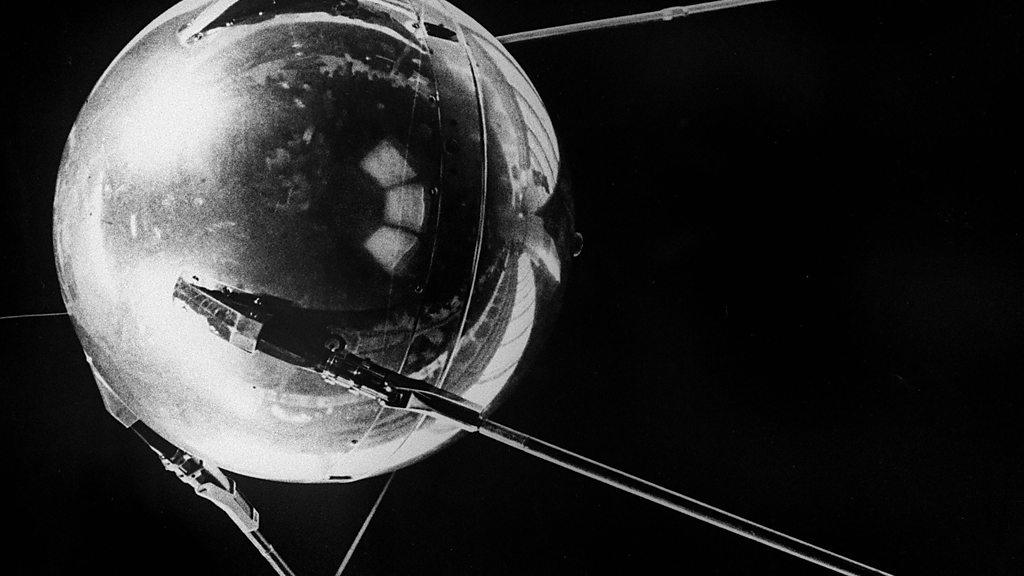What was the Russian revolution?
- Published
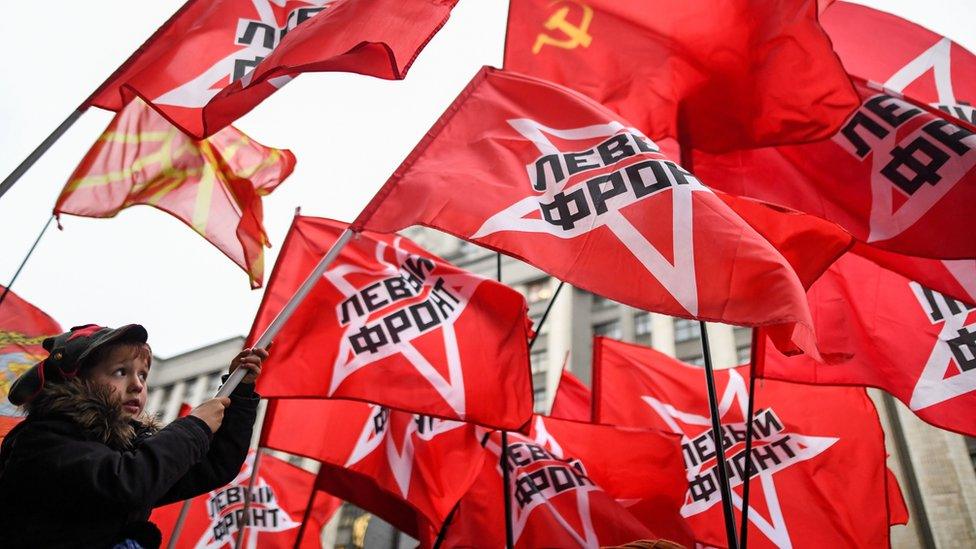
A boy in Moscow waves a communist flag during a rally to mark the 100th anniversary of the October 1917 revolution
This month, the world remembers 100 years since the 1917 Russian revolutions.
The revolutions in Russia are incredibly important historic events.
They marked the beginning of a new political system in action - a system known as communism.
Communism ended up being a big influence on world history. You can find out more about what happened here.

What happened in 1917?
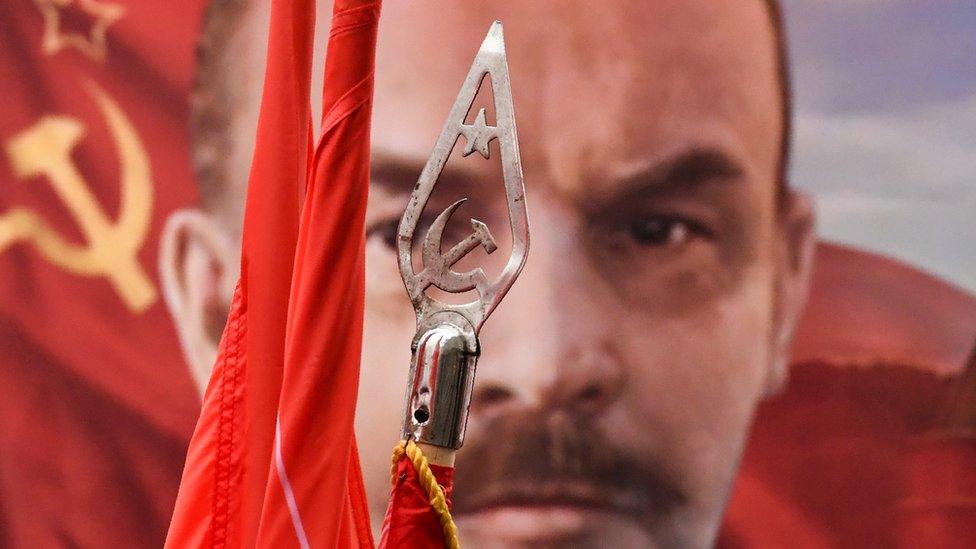
The communist symbol is a sickle and hammer, which were seen as tools of the working class
For three hundred years, Russia had been ruled by a royal family - the Romanovs.
The Romanovs had been an incredibly powerful family, ruling one-sixth of the world's surface. But the ruler at the time - Tsar Nicholas II - was seen by many as a very bad leader.
On 24 February, riots broke out in the capital city of St Petersburg. People were angry because there was hardly any food for them to eat and World War I was going very badly.
What is a Tsar?
A tsar is a ruler of Russia, similar to a king. It comes from the Roman word caesar.
A queen is known as a tsarina.
Tsar Nicholas II decided he could no longer rule in Russia, because many of the soldiers refused to obey his orders to put down the riots. He stepped down on 2 March.
A group of people called the provisional government took over the rule of the country.
Russians hoped that life would be much easier and fairer now that the Romanovs had gone. However, many problems remained and in October there was a second revolution.
In many ways, this revolution was even more important than the first revolution, as it started a brand new political system that had never been tried before.
That system is called communism - and the first communist ruler of Russia was a man called Vladimir Lenin.
Read on to find out more about exactly how this happened.

Why was there a revolution?
There are lots of different reasons why there was a revolution in Russia - mostly to do with how the country was being run.
Many Russians felt that life was hard and unfair. It seemed that a small number of people who were rich and powerful had everything, while poorer people had nothing.
They felt that the Tsar did little to make things fairer for them.
To understand the events of 1917, we must go back a little further to 1905.

Bloody Sunday
In 1905, there was a protest outside the Winter Palace in St Petersburg against Tsar Nicholas II. This was because people wanted more rights and better living and working conditions.
Despite the peaceful nature of the protest, the demonstrators were attacked by soldiers of the Palace Guard in St Petersburg. This day is now remembered in Russian history as Bloody Sunday.
Many people blamed the Tsar for the attack. In order to win the people's trust back, Nicholas created a new organisation called The Duma.
This was supposed to help make things fairer and give the people more power.
However, he did not keep his promises. He closed the Duma down when it did things he did not like, and the Duma had very little true power in Russia.
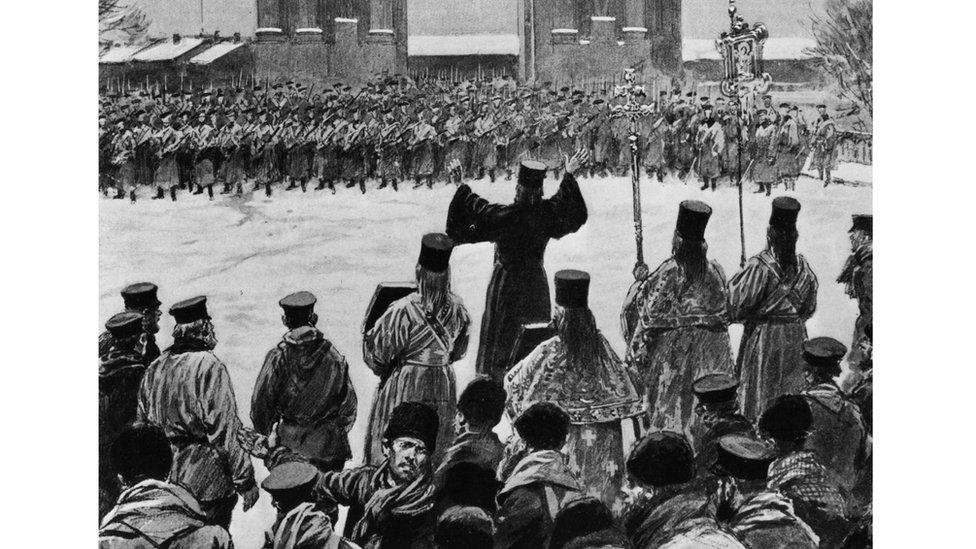
An illustration of the peaceful protesters meeting the St Petersburg police on Bloody Sunday

War, hunger and poverty
Over the next ten years, there were more problems for Russia under Tsar Nicholas II's rule.
In 1914, Germany declared war on Russia. This war - World War One - got much bigger and lots of other countries were involved.
Many Russian soldiers were killed in this war and Russia lost important battles. The army was also short of uniforms, food and weapons with which to fight.
At home there were even more problems. In particular, there were food shortages in the cities - people were hungry, cold and food prices were rising.
The Tsar also made a decision to lead his armies, and he left his wife, the Tsarina Alexandra, in charge of Russia while he was away at the frontline.
This was an unpopular decision because the Tsarina was German and not well liked by the people.
She was also considered to be under the influence of Rasputin - a sort of religious teacher - who was generally hated by many people in Russia - the rich as well as poor.
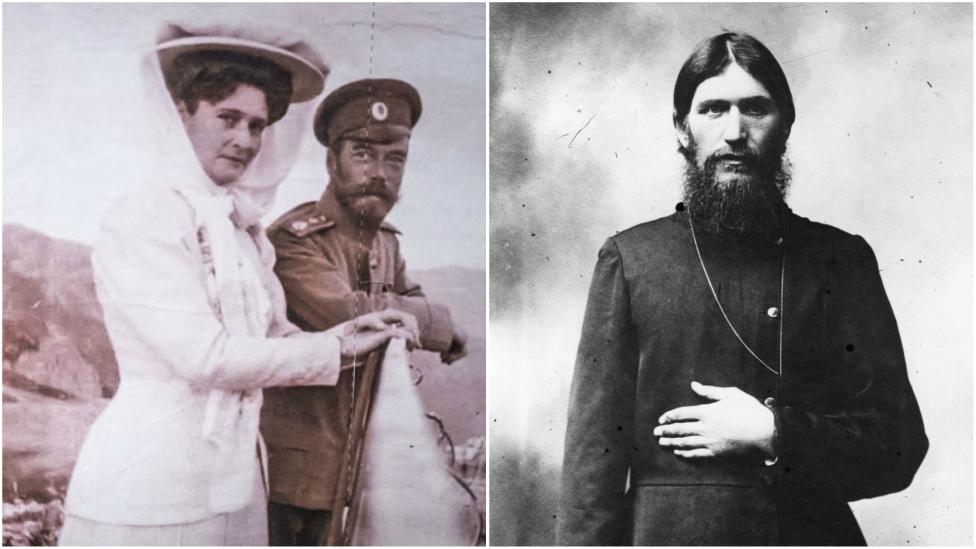
This is the Tsarina and the Tsar standing together on the left, and Rasputin on the right

The First Revolution: The end of the Romanovs
By February 1917, many Russians were fed up. Riots broke out in St Petersburg.
Tsar Nicholas II's troops joined these riots. The Tsar had no choice but to step down.
This ended 300 years of Romanov rule in Russia and a new government was set up, called the Provisional Government.
This was meant to be a new start for Russia, but there were still more problems to come.
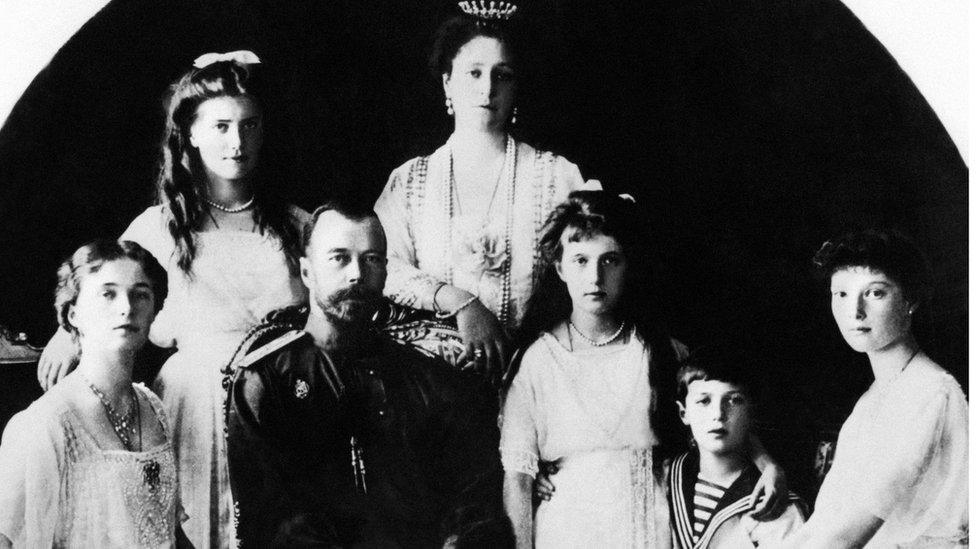
This photo of Tsar Nicholas II and his family was taken just before the first revolution in 1917

A new beginning?
The Provisional Government said they wanted to create a fairer society - but there were lots of issues that needed fixing.
Firstly, Russia was very poor and lots of people in the cities were hungry.
Secondly, they were still at war with Germany, which was costing lots of money.
The new government struggled to organise themselves. There were a number of disagreements about how things should be run.
It did very little to help the people in the first few months of power and continued to fight in the war against Germany.
This led to a second revolution in October. This second revolution brought in a new system that would change the world forever.
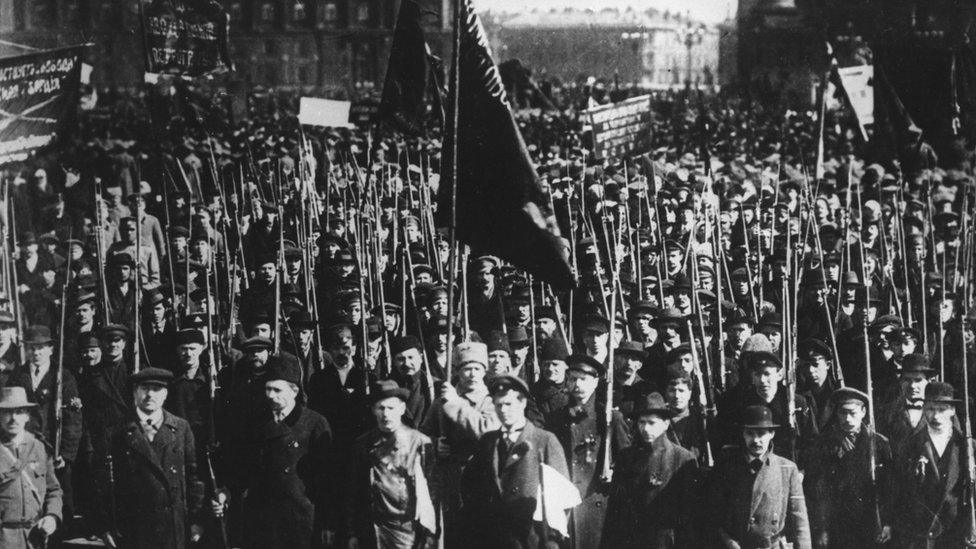
A group of demonstrators gather in Palace Square, Moscow in May 1917

The Second Revolution: 'Peace, bread and land'
Vladimir Lenin knew how unhappy the people of Russia were.
He promised them lots of things that they wanted - his slogan was peace, bread and land. This promise made him very popular.
Lenin was the leader of a group of revolutionaries called the Bolsheviks. The Bolsheviks wanted to bring a new political system called communism to Russia.
Until this point, communism had never been tried before.
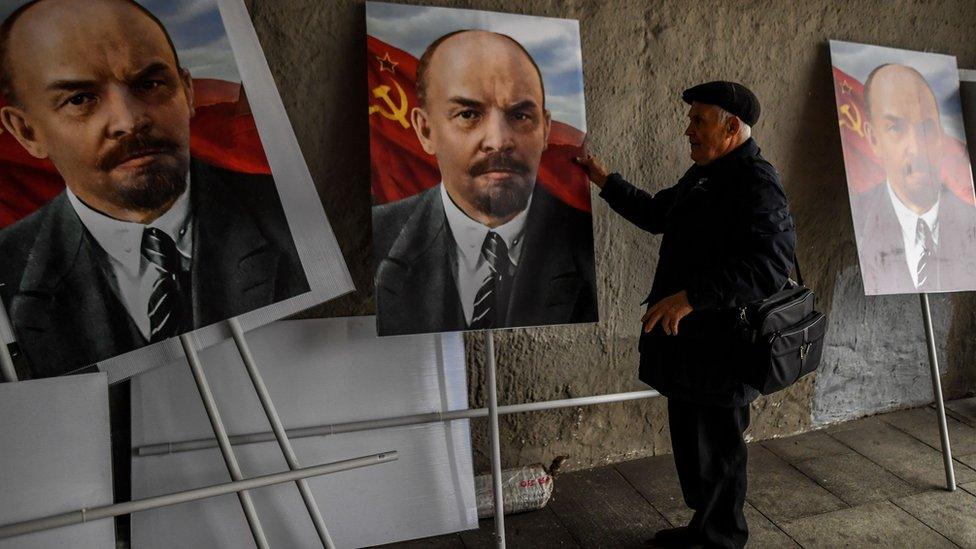
Pictures of former communist leader Vladimir Lenin were paraded through Moscow as part of the 100-year anniversary

What is communism?
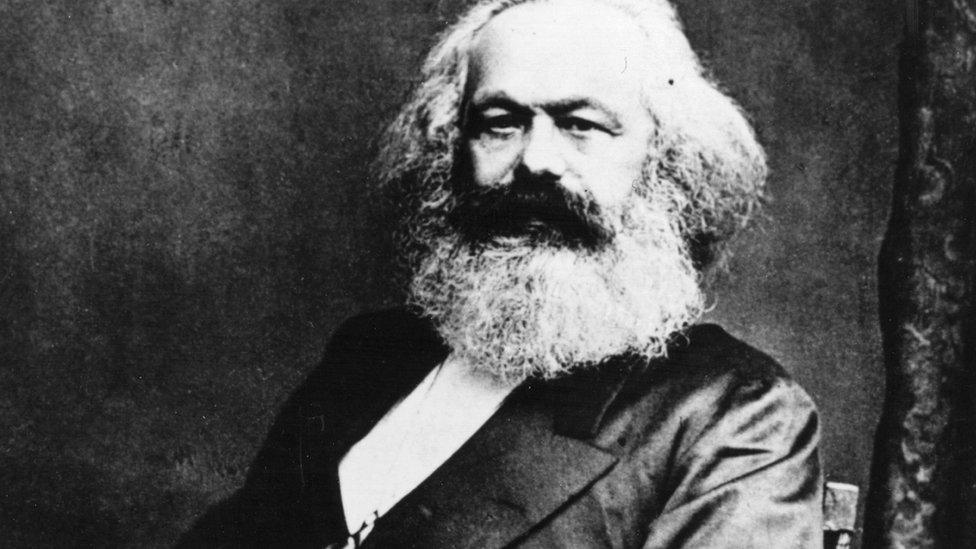
Karl Marx
Communism is an idea created by a man called Karl Marx.
But the ideas behind communism divide people around the world to this day.
For some, communism is an idea which can lead to a fairer society.
But millions of people have been killed or imprisoned under communist rulers.
It often also failed to bring about the changes promised to countries that have tried it.

Who was involved?
As you might have already guessed, the Russian revolutions were very complicated and there were lots and lots of people involved!
Here's a quick guide to the key people who took part in the revolution, and the roles they played.

Vladimir Lenin
Lenin was the first communist leader in Russia and the leader of the Bolshevik revolutionaries.
He was a radical thinker and believed that a communist revolution would help bring equality to Russia.
Many Russians remember him as a great leader and liberator, but to others his government was seen as controlling and cruel, as he imprisoned and killed people who disagreed with him.
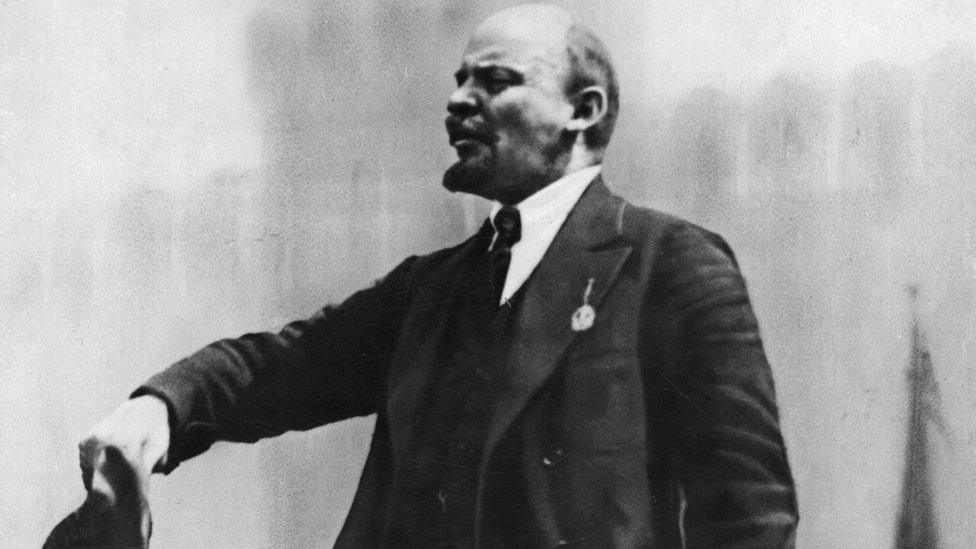
Vladimir Lenin

Leon Trotsky
Second to Lenin, Trotsky was intelligent and a great speaker. He knew how to motivate the crowds.
He was a rival of another Russian revolutionary, Joseph Stalin. Both wanted to take control of Russia when Lenin died in 1924.

Leon Trotsky

Joseph Stalin
Remembered as one of the most ruthless leaders in world history, Stalin's name means 'man of steel'. He took over the communist party when Lenin died.
While many of his decisions helped the Soviet Union become a major world power again, his government was seen as very controlling and he ruled the country as a dictator.
Millions would die under his rule, but he also led the Soviet Union into victory in World War II.
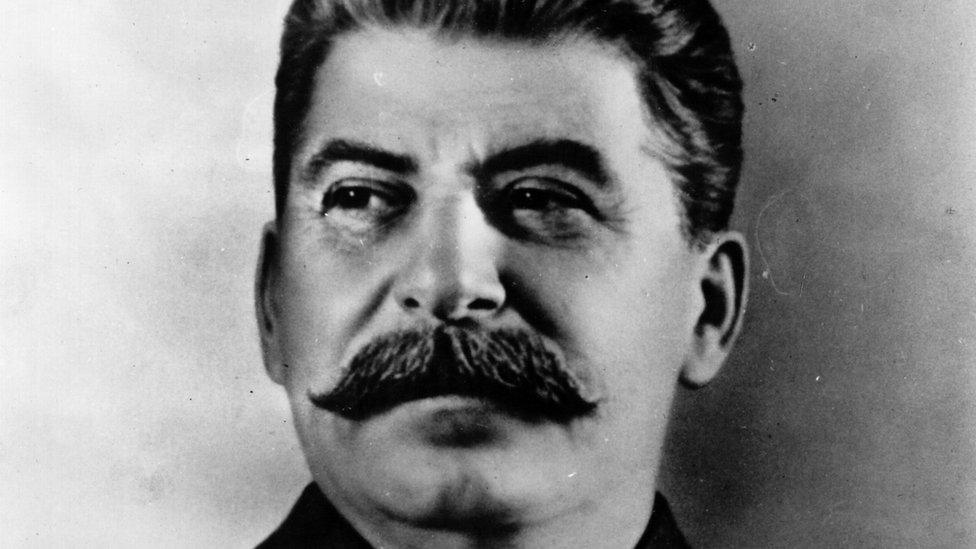
Joseph Stalin

What happened next?
After the communist party took over, Russia and some countries it controlled were renamed The USSR - the Union of Soviet Socialist Republics. You might sometimes hear it called the Soviet Union.
During its years as a communist state, Russia had a huge impact on the rest of the world.
Years after the October revolution in Russia, many other countries became communist, including China, North Korea and Cuba.
Over time, there was a division that grew between communist countries and other countries, such as the USA.
This division was known as the Cold War and lasted for a very long time but ended in 1991.
The USSR existed as a communist state from 1922 to 1991, at which point the communist party ended its rule.
Russia is now a republic, with a president called Vladimir Putin.
Who is Russian President Vladimir Putin?

Why are we marking the October revolution in November?
The October revolution happened on 24-25 October.
However, the world is marking 100 years since it happened now - at the start of November - because in Russia in 1918, there was a change in the calendar.
It moved from something called the Julian calendar to the Gregorian calendar, which we use today.
This meant that dates shifted around a little, which is why the anniversary is being marked now.
- Published27 April 2020
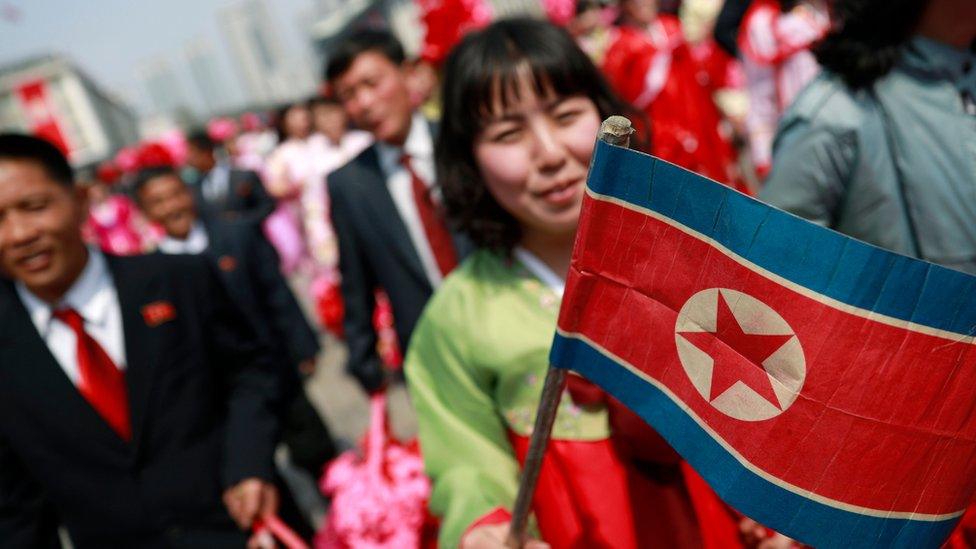
- Published2 November 2017
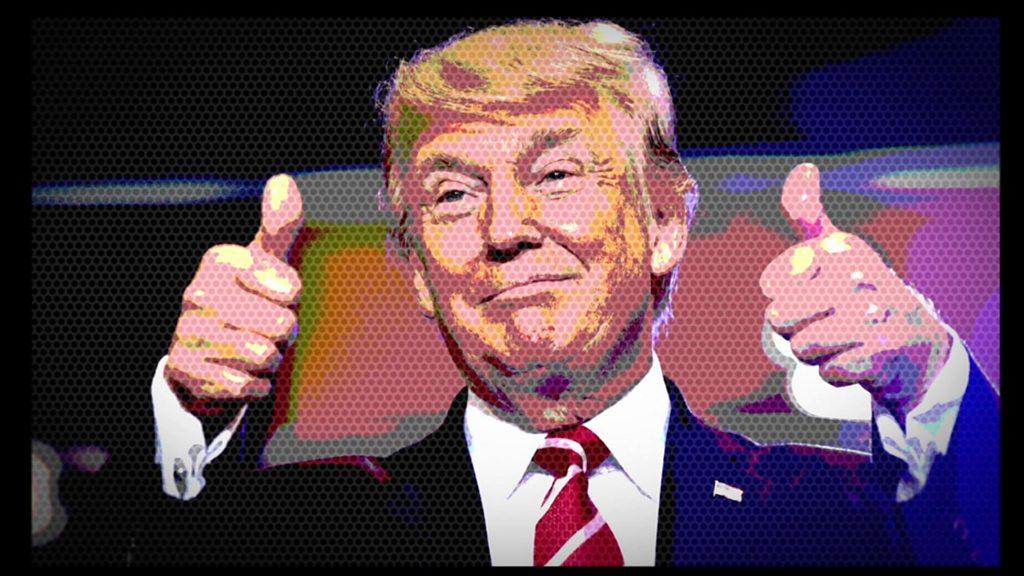
- Published16 October 2019

- Published4 October 2017
